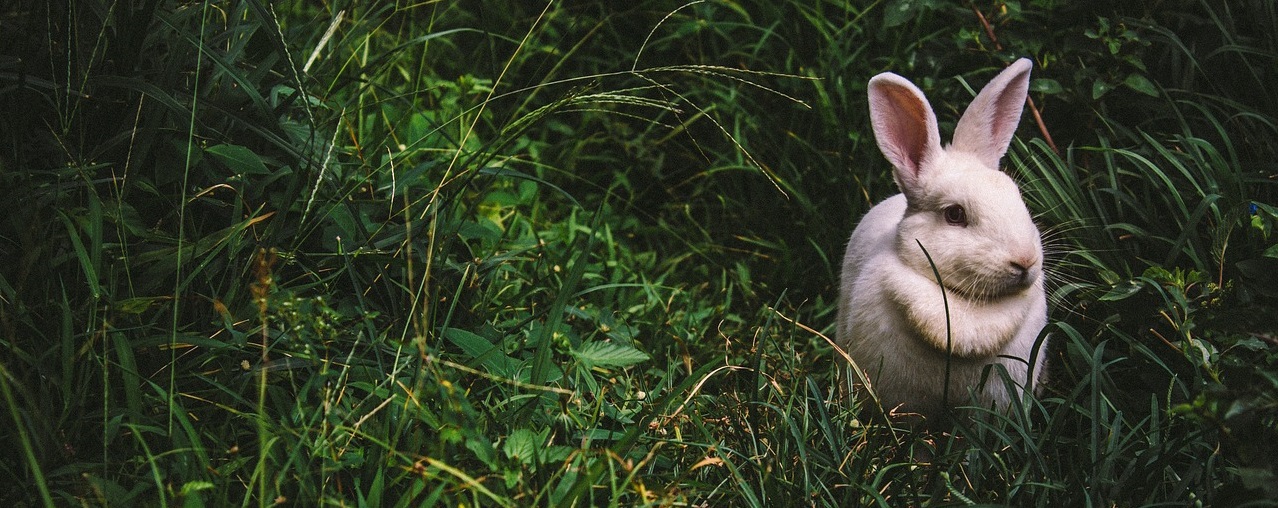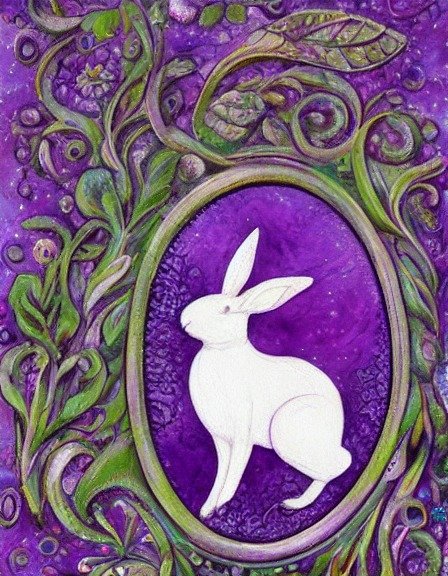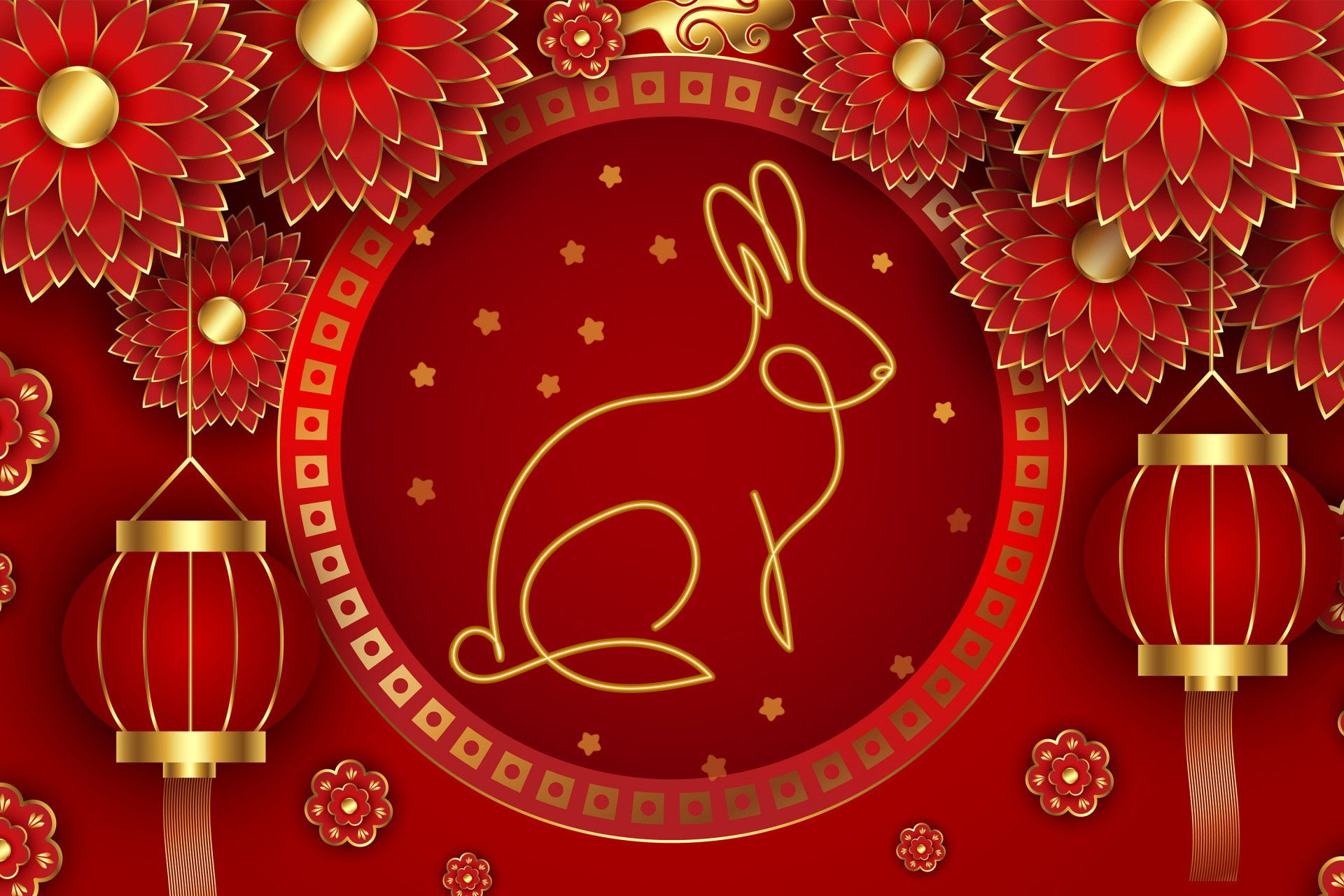Rabbit
All the world will be your enemy, Prince with a Thousand Enemies. And when they catch you, they will kill you. But first they must catch you; digger, listener, runner, Prince with the swift warning. Be cunning, and full of tricks, and your people will never be destroyed."Rabbit" is a name given to a variety of species of small mammals of the Lagomorpha genus, which also includes the Pikas and Hares Ubiquitous to every continent except Antarctica, this small prey animal is also familiar as a domesticated pet and form of livestock throughout the world. Once classified as rodents, lagomorphs have been discovered to have diverged from their common ancestors earlier than their rodent cousins, and have many traits rodents lack, such as an extra pair of incisors. The primary symbol of House Lapin, rabbits are symbolic of many qualities that are taken from their natural behaviours. Depending on the culture and its associations, rabbits have embodied mischief, trickery, humour, cleverness, underhandedness, cunning, fertility, sexuality, gentleness, peace, sociability, self-sacrifice, and wisdom.
Basic Information
Anatomy
Rabbits are furred creatures, best known for their elongated ears and powerful hind legs, as well as their fluffy, short tails. These legs are considerably larger and more powerful than the forelegs, creating their "hopping" form of locomotion. Their cousins, the pikas, have a similar anatomy but lack an external tail and have shorter, more rodent-like ears. Hares are distinguished from rabbits by longer and less rounded bodies, longer legs, and longer ears. Since all lagomorphs rely primarily on speed and alertness to avoid predators, they also have well-developed musculature.
All three genii have elongated incisors, one pair behind the other, intended for chewing rough plant matter, and are classified as herbivores, although it has been proven that they will eat animal protein, usually scavenged, especially in harsh climates. They have large, widely spaced eyes.
Teeth and powerful hind legs can provide surprisingly formidable weapons, should a rabbit be attacked. They also have claws on all four limbs and can and will scratch.
Lagomorphs remain on their toes while in motion, and their toes are webbed to prevent spreading while doing this. Unlike most animals that move in this way, they do not have paw pads on their feet. Instead, they have compressed hair that provides their feet with protection.
A secondary sex characteristic among rabbits is known as a dewlap, which looks like a double chin and often gives the impression that a female rabbit, called a doe, is chubbier than she is. This allows her to pull fur from the dewlap to line the burrow she has dug for her kits when they are born. The dewlap is not present in all species, and may be larger or smaller depending on the species. It is not present in hares.
Genetics and Reproduction
Rabbits are a symbol of fertility because they are extremely fertile. A female rabbit becomes sexually mature at three to eight months of age and can conceive at any time of the year for the duration of her life. Female rabbits also have two uterii, with two separate cervixes but a single uterine canal. Average gestation period is about a month, with shorter gestations usually producing larger litters and longer ones producing smaller litters. The size of the litter can range from 4 to 12 kits, and female rabbits (called "does") can become pregnant again as early as the next day. This fecundity is due to a high embryonic and infant mortality rate.
Does dig burrows for their young, and this is the primary way that rabbit warrens are built. Kits are born hairless and with eyes closed, and the doe, knowing she gives off a scent that can attract predators, will stay away from the nest, only returning a few times a day to nurse the kits.
Ecology and Habitats
Rabbits are almost everywhere. Over half of the world's rabbit population can be found in North America. They are also native to Europe, Southeast Asia, Sumatra, some Japanese islands, parts of Africa, and South America, where they are relatively recent arrivals. They have also been naturalized to Australia and are widely regarded as an invasive species and pest. They are not naturally found in most of Eurasia, where a number of hare species are present. The best known species of rabbit, the European rabbit, has been broadly introduced around the world, and the so-called Chinese rabbit is, in fact, a European rabbit by species. Their habitats include meadows, woods, forests, grasslands, deserts, and wetlands.
Additional Information
Social Structure
Rabbits organize themselves in extended family groups called "colonies," "fluffles," or "warrens," although "warren" usually refers to their networks of tunnels and burrows.
Uses, Products & Exploitation
Rabbits are bred and hunted for meat and fur, especially since they reproduce quickly. They do not make a good staple meat since their flesh has a low fat quantity, but they tend to be a good supplement to a diet that is easily replenished.
Geographic Origin and Distribution
Every continent except Antarctica
Perception and Sensory Capabilities
As prey animals, rabbits and other lagomorphs have widely-spaced eyes which allow for almost 360 degree vision, leaving only a small blind spot at the base of the skull. Their elongated ears, which are usually extremely mobile, allow them to detect enemies at significant distances, giving them increased time to react.
This article is a work in progress, and may be subject to changes.
This article is part of a series related to streaming the Game of Tomes. For more information, see Streaming Game of Tomes.
Tricksters
Rabbits are frequently portrayed in folklore and myth as tricksters, living by their wits and outsmarting (and often embarrassing) their enemies. Probably the best known Rascally Rabbit in popular culture is Bugs Bunny, but other examples include a variety of First Nations myths such as Jistu and Nanabozho, Br'er Rabbit (an African mythological figure maintained by Black people enslaved in the American South and passed on into American folklore,) Monsieur Lapin, Peter Rabbit, Mr. Bunnsy, and El-Ahrairah, the trickster-rabbit-hero of Watership Down, who is beloved by House Lapin and incorporated into their culture. The link to Rascally Rabbit, above, provides an exhaustive list.
Scientific Name
Lagomorpha leporidae (various species names)
Lifespan
Rabbits live about three to six years on average.
Conservation Status
There is no shortage of rabbits in the world as a general rule, although individual species can occasionally be endangered
Body Tint, Colouring and Marking
Rabbits come in a variety of fur colourations. Primarily, wild rabbits tend to agouti fur or, rarely, melanistic fur. Domestic rabbits tend to more variation. Very rarely, a rabbit may be born an albino, distinguished by their white fur and pink or blue eyes.
Clearly, the rabbit depicted on the banner of House Lapin is an albino, although why that is so remains a mystery lost to the earliest days of the House. It is thought to be connected to the myths associated with Rabbits in the Moon.
Geographic Distribution






Comments